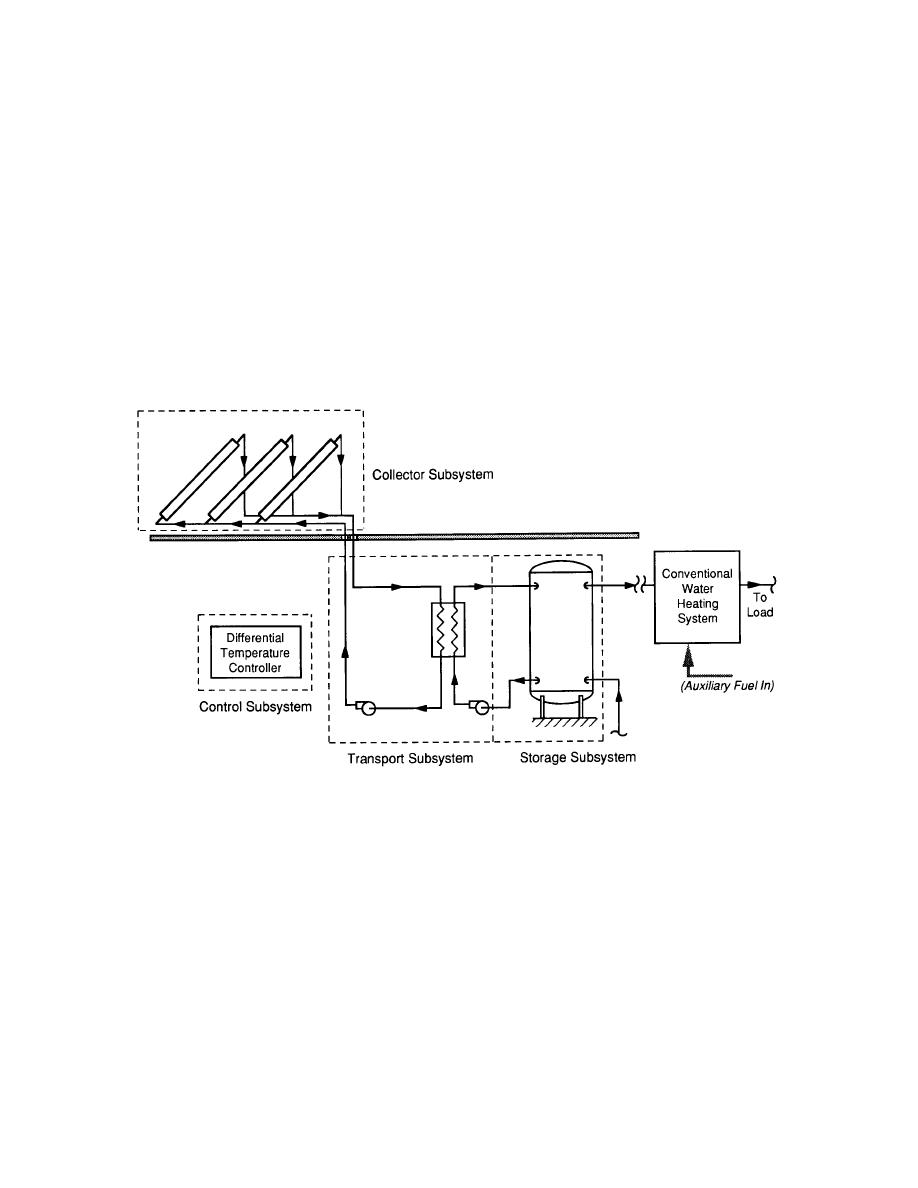
UFC 3-440-01
14 June 2002
APPENDIX F
SOLAR ENERGY SYSTEM FUNDAMENTALS
F-1. INTRODUCTION. A solar thermal energy collection system (or "solar system"
for short) is thus defined as a set of equipment that intercepts incident solar radiation
and stores it as useful thermal energy to offset or eliminate the need for fossil fuel
consumption. Four basic functions are performed by a typical solar system. For this
manual, each function is defined within specific sub-systems of a typical solar energy
system as illustrated in Figure F-1 and discussed below.
Figure F-1. Typical Solar Thermal Energy System
a. Collector Sub-System. The collector sub-system intercepts incident solar
radiation and transfers it as thermal energy to a working fluid. It is defined as the solar
collectors, the hardware necessary to support the solar collectors, and all
interconnecting piping and fittings required exterior to the building housing the system.
b. Storage Sub-System. The storage sub-system retains collected thermal
energy for later use by the process load. It is defined as a storage tank and its fittings,
as well as necessary supports.
c. Transport Sub-System. The transport sub-system delivers energy from the
collectors to storage. This sub-system is defined to include the heat transfer (or
working) fluid, pump(s), the remaining system piping and fittings, an expansion tank,
and a heat exchanger (if required).
F-1



 Previous Page
Previous Page
